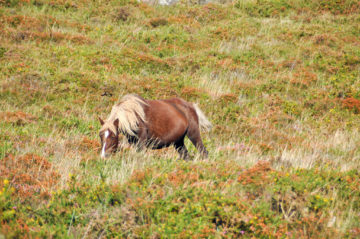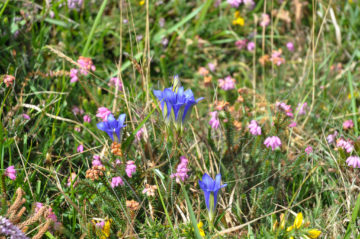Heathland conservation in northwest Iberia should focus on traditional management.

Atlantic heathlands are one of the most remarkable and iconic European landscapes. Once widespread throughout the Atlantic region, from Portugal to Norway, their cover has significantly declined to the point where they are now rare in most countries.
In an attempt to counter this trend, the EU has included a range of types – from wet to dry, coastal to mountain – in the Habitats Directive (92/43/CEE), the keystone of many European nature conservation policies. Today, many Special Areas for Conservation included in the Natura 2000 network of protected sites include a significant area of land covered by heaths – a conservation safeguard for the future.
Despite the good intentions, however, the design of many conservation areas may be inadequate when it comes to heathland protection. With very few exceptions, appropriate management is required to maintain the optimal conditions of the heath, otherwise the dynamics of the community will, sooner or later, force its transition towards scrub and woodland.

Heathland management is commonly carried out in one (or a combination of) three ways – cutting, burning or grazing by large herbivores. Selecting an appropriate management regime depends on the conditions of the area, climate and environment, and available resources. The traditional way in each particular area is often the best option, as it is the result of historical selection by local farmers balancing the optimisation of natural resources with the centuries-old preservation of a valuable, semi-natural habitat.
In our study area, the mountainous wet and dry heaths of Galicia, in the northwest corner of Spain, extensive grazing has long been the principal way of managing the land. To some extent, it still is. Galicia is mainly a rural region, known by many that have followed the pilgrimage route to Santiago de Compostela.
Walkers often claim to have enjoyed this walk, the warmth of the people, and the friendship amongst pilgrims. They also admire the beautiful landscape, with its green pastures, forests and numerous rivers. Extensive mountain areas covered by heathland used to be part of this mosaic, but these are now becoming rare, as they are gradually transformed into eucalyptus plantations, improved pastures or scrub.
There are many complex reasons behind the profound changes experienced by Galician rural landscapes over recent decades. Most of these are associated with rural depopulation, as heathlands have lost their significance for modern agriculture. In other cases, intensification has caused a similar effect, with low productivity heathland replaced by improved pastures to maximise the availability of grass palatable for cattle.
Current trends will see a continued reduction in heathland cover, unless action is taken to protect what little remains. While a lack of management is still a threat to these areas, the presence of grazers aids in the maintenance of heathland patches.

The most important of these grazers are the populations of wild ponies that roam the coastal mountain ranges of Galicia. These ponies, called “bestas” (beasts) by their owners, are a key element of the heathland landscape, as they help to maintain the best conditions in terms of vegetation structure, heterogeneity and species richness. Rare species occur in the best preserved heathland, such as the marsh gentian (Gentiana pneumonanthe) – a rare plant declining in Western Europe, it is well distributed across the wet heaths of northern Galicia.
Galician heathlands are a good representation of what once was a widespread Western European habitat. While protective efforts are required for their conservation, human intervention should certainly be maintained – manifested in the presence of grazers such as wild ponies – to prevent biodiversity loss and the accumulation of biomass that can serve as fuel for wildfire. Preserving traditional ways should be the aim of heathland conservation efforts.
Jaime Fagúndez
BioCost research group
Department of Biology
University of A Coruña
Spain